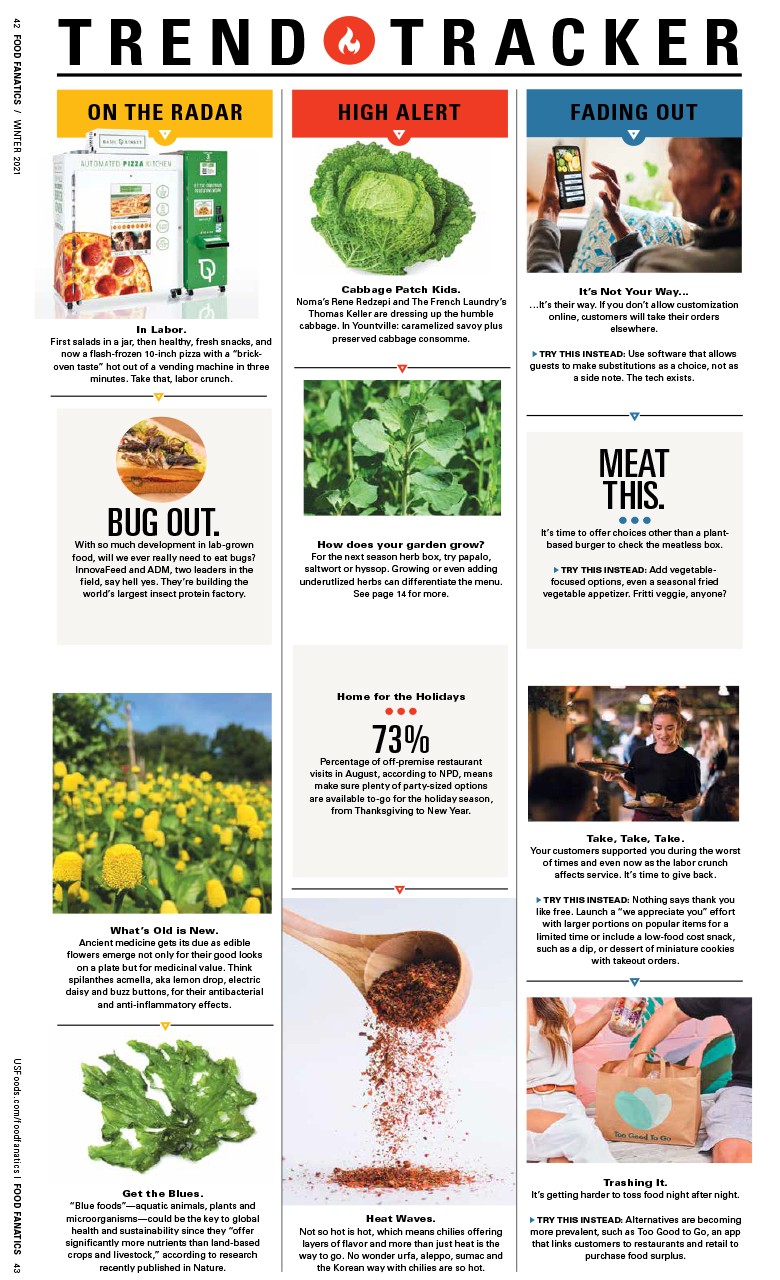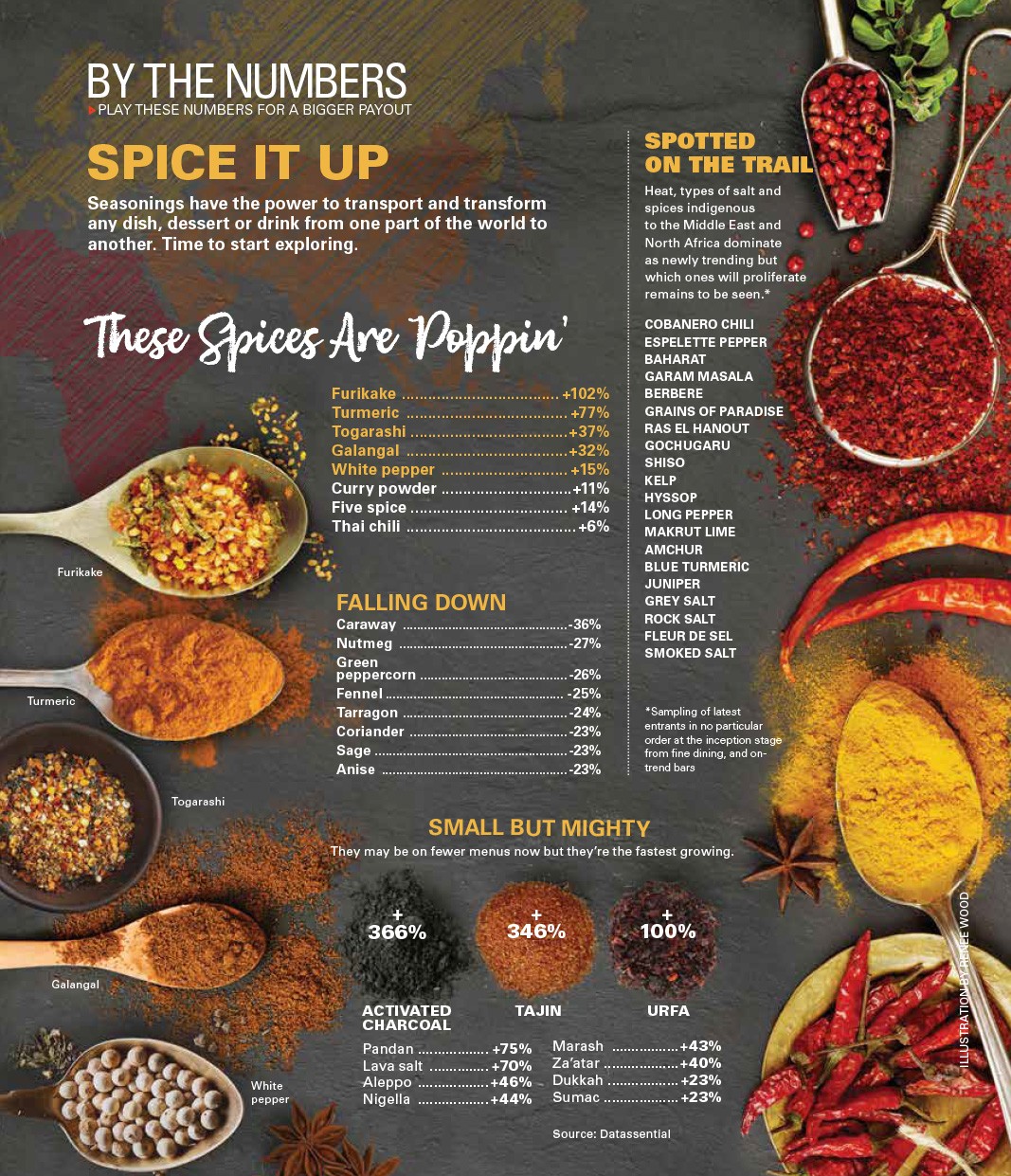Once Is Enough
Chefs toss the cookie cutter concept in favor of empires built one unique restaurant at a time
Chef Tom Douglas will soon own 16 restaurants within 10 blocks in downtown Seattle. Two of his most recent are twins named Serious Pie. The others? Unique concepts with their own menus, service styles and identities.
Douglas wouldn’t have it any other way.
“I can walk to any of my joints in 15 minutes,” he says. “They all get a lot of attention.”
Douglas is among numerous other chefs, such New York’s David Chang, Chicago’s Bill Kim and other independents building an empire in post-recession fashion: one unique restaurant at a time, rather than mass producing a single concept.
But these aren’t fine dining, white tablecloth establishments. They’re neighborhood restaurants, often fast casual eateries where traditional waitstaff is optional.
“You use the same POS system, the same architect and the same food supplier. There’s a lot of leverage from one concept to another, even if the concepts aren’t twins.”
—Dennis Lombardi of WD Partners, a restaurant design and consulting firm
This approach might not have been possible—or even desired—a decade ago. Social media has allowed savvy chefs to build brands, and their own cult of celebrity, with lightning speed. “Everything is instantaneous,” says William Bender, a Santa Clara, Calif.-based restaurant consultant. “That allows a chef and a brand to connect with a community immediately.”
As chefs gain popularity with menus built around foodstuffs from nearby farmers and producers, they’re likely to stay local to keep loyal diners happy, maintaining their relationship with the local food community. Take, for example, the other incarnations of Fatty Crab, a Malaysian inspired restaurant in New York. Fatty ‘Cue is a Malaysian-style barbecue joint in Brooklyn while its kiosk spinoff is in Battery Park. There’s a Fatty Snack—a quick service restaurant on wheels at the World Financial Center and a pull cart (food truck hybrid) in Central Park. Both serve Asian-inspired lunch fare.
“People want more local, niche-feeling places,” says Lori Mukoyama, a principal of RTKL Associates Inc., a hospitality architecture and design firm based in Washington, D.C. Customers are more savvy now, she says. “The whole local twist is a big deal.”
The recession helped make these types of operations possible. The slump created a public hungry for flavorful food at reasonable prices and made real estate accessible to independent chefs, especially those willing to open small restaurants in out-of-the-way neighborhoods.
Still, going the one-off route has more advantages than one would think. Restaurants spawned by the same chef are more alike than they are different, points out Dennis Lombardi, partner at WD Partners, a Columbus, Ohio-based restaurant design and consulting firm.
“You use the same POS system, the same architect and the same food supplier,” he says. “There’s a lot of leverage from one concept to another, even if the concepts aren’t twins.”
The drawbacks? Chefs still have to create a menu and recipes for each location. While that scratches a creative itch, it can be time consuming, not to mention risky. And there’s no guarantee that the spinoff of a successful restaurant will succeed or that a brand-new restaurant will take off. But chefs, especially creative ones, are nothing if not risk-takers. “There’s nothing on my radar screen that tells me this is going to slow down,” Lombardi says.
Starting small when you’re already big
Thanks to his 2010 Top Chef appearance, Angelo Sosa probably could have opened his second restaurant anywhere in New York City.
Yet Sosa, who placed second on the competitive cooking show, chose a risky 900-square-foot space on an unproven stretch of 10th Avenue for Anejo Tequileria, his full-service Mexican concept featuring small plates and rare tequilas.
Anejo opened quietly earlier this year without publicity or social media plugs, even though Sosa has nearly 15,000 Twitter followers. During the first months, Sosa responded to customer input, adding a menu of tequila flights when diners said they wanted to sample more than one of Anejo’s rare tequilas.
The neighborhood rewarded Sosa for taking input and risks. The 80-seat full-service restaurant rings in about 200 covers a night, and is on track to gross $2 million this year, Sosa says.
Success breeds dreams. Sosa, 37, thinks about opening Anejos in other cities. But they won’t be replicas of the original, and the growth has to be organic, he says.
“I’m more fixated on what’s in front of me rather than sprawling things out,” he says. “The core concept has to work 100 percent.”
Meanwhile, he has more cooking to do in New York City. Earlier this year, he launched Rigamarolls, a wholesale business specializing in spring rolls. Social Eatz, the full-service, Asian-inspired restaurant Sosa opened on the East Side last year, brings his New York count to three.
Sosa would like to open at least one more place this year, a full-service restaurant where he’ll focus on flavor profiles, rather than a specific cuisine. After that, he’d like to open an Asian-style farm-to-table restaurant.
When that happens, “I’m in the kitchen day-to-day, really just cooking my cuisine and going for it,” Sosa says.
BILL KIM
Turning Chi-Town into Belly-Town
Bill Kim married Korean and Puerto Rican cooking, or at least put them in the same kitchen. The result: a successful union, now with three offspring.
Earlier in his career, Kim was a fine dining chef, at Susanna Foo’s in Philadelphia and then Le Lan in Chicago. Windy City food lovers know him as the force behind Urban Belly, Belly Shack and Belly Q, three casual restaurants beloved for their flavorful, affordable cuisine.
Kim opened Urban Belly in a Chicago neighborhood strip mall in 2008. The tiny restaurant soon built a cult following, so in 2009, Kim opened Belly Shack, another quick casual restaurant a few miles south of Urban Belly under the city’s Blue Line train tracks.
To his surprise, it didn’t catch on right away. “It had its ups and downs,” Kim says, adding that now, Belly Shack’s business is equal to or greater than Urban Belly’s.
Belly Q, his third restaurant, opened in August. At 200 seats, it’s 10 times bigger than his first two endeavors, offers table service (the others offer have limited service) and is located in a well-trafficked neighborhood.
But building Belly-ville hasn’t been easy, Kim says. Menu development and food preparation have been huge hurdles. For instance, Belly Shack serves Korean meatballs, made from Kim’s mother’s recipe. The restaurant also makes curry mayonnaise, a process that takes 24 hours. “You’re starting from scratch every time,” he says.
There are benefits—Kim can reward staff by moving them to new concepts—and his wife, Yvonne Cadiz-Kim, who's Puerto Rican, inspires the menus. The Bellys make money. Net profits at Urban Belly, Kim says, are 20 percent. “When I was a fine dining chef, 6 percent was like, ‘Oh my god, you hit it big,’” he says.
Conquering Seattle, restaurant by restaurant
A near disaster, not an overnight success, helped longtime Seattle chef Tom Douglas realize that unique concepts would lead to conquering the Emerald City.
Douglas opened his first of his 16-restaurant empire, Dahlia Lounge, in 1989. “We had no money, no backup and no business,” Douglas says. “It took us two years to dig ourselves out of that hole.”
Five years later, duplicating Dahlia was the last thing on Douglas’s mind as he signed deals for his next two restaurants, Etta’s and Palace Kitchen. “It made me think about what would have a better return, maybe be a little quicker,” he recalls. “It made me be more thoughtful about what I should be doing and balance the portfolio.”
Today, Douglas’ array of restaurants is anything but balanced. It includes several American concepts, including Dahlia; a Tibetan dumpling stand, Ting Momo; and Brave Horse Tavern, a casual bar and grill. Douglas has also dipped his toe into duplicating—he has two Serious Pie pizzerias in Seattle.
The first opened five years ago, and when lines were out the door, he figured another would be just as successful.
Douglas sees nothing but upsides to opening unique restaurants. “With each place, you’re trying something exciting,” he says, noting that this past summer, he was hunting for falafel recipes for a new venture, Palace Falafel. Opening new restaurants also gives him places to promote his staff of 700, 200 of who have worked for Douglas for a decade or more.
“With each place, you’re trying something new and exciting,” says Douglas. “It makes me happy to see them all up and running.”
Lisa Bertagnoli is a Chicago-based freelance writer.



